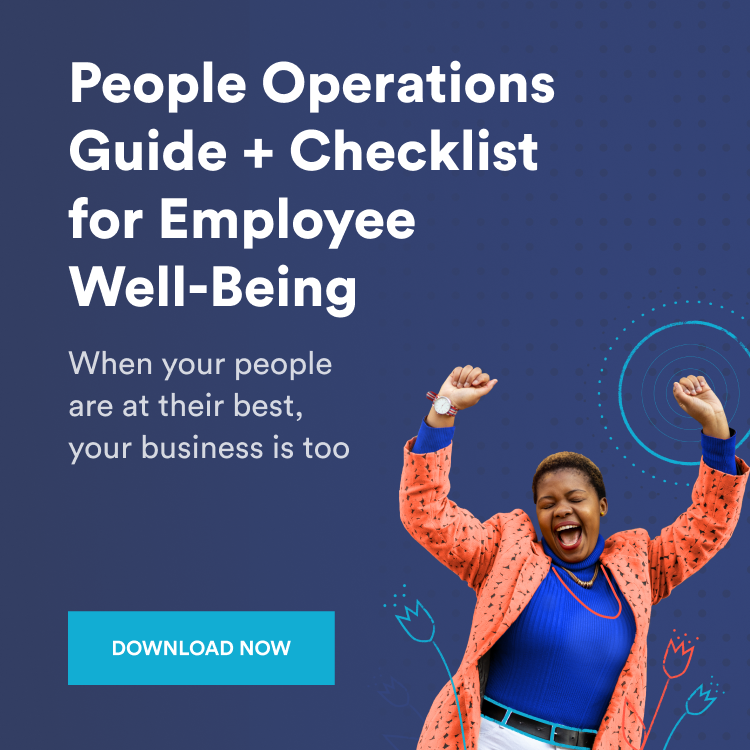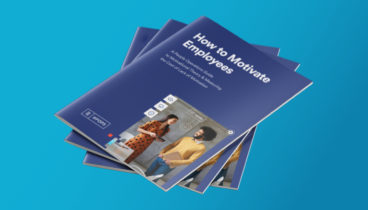What 2022 workplace trends can help spark joy in your employees? Find out here.

The COVID-19 pandemic pushed many offices out of physical spaces, and into a new remote reality, or a hybrid working model. As of April 2021, one Deloitte study found that 67% of offices were fully remote, and 27% took a hybrid approach (a mix of in-person and remote).
While there have been many perks to remote working life, this same study found that the biggest concern among managers was keeping their culture alive. While physical proximity and in-person experiences play a role in keeping culture alive, there are ways you can keep it strong, while working remotely.
A BambooHR study found that most people define culture in ways that are not necessarily related to physical space. These include values and principles, an overall vibe and feeling, and how coworkers interact with each other. Culture can also relate to the way that people have fun at work!
So what does it mean to have a fun workplace in 2022? Small businesses and their HR departments have found creative ways to have fun in the workplace. Here we list 7 fun workplace trends for 2022 to spark joy with your employees.
1. Fun topical Slack channels
With over 10 million daily active users, there’s a good chance your business already uses Slack. If you don’t, the price for small businesses is about $7.00 per user per month. Slack is a great internal communication tool that also allows you to create topic-specific channels. One way to keep your office fun is by creating channels for your employees to discuss non-work related topics.
Some ideas to get you started include creating channels for sharing music, cooking and recipe ideas, pictures of furry colleagues, pictures of thriving plants, and favorite at-home workouts.
2. Encourage employee recognition and appreciation
Productivity and engagement is 14% higher in companies that acknowledge good work, and turnover is reduced by 31%.
Recognizing your employees for a job well done is not only good for morale, but for productivity and retention: Productivity and engagement is 14% higher in companies that acknowledge good work, and turnover is reduced by 31%. Appreciation can be shown by providing your employees with more leadership opportunities, rewarding specific behavior publicly, and implementing peer-to-peer recognition. Make 2022 the year you recognize and appreciate your people frequently and personally.
3. Give time off to volunteer in communities
One growing perk is providing days off for your employees to give back to their communities. Not only is it good for your community, but studies have shown doing volunteer work makes workers more productive and engaged. Other studies have shown that companies who offer volunteer programs are more appealing to job seekers.
There are a few ways to go about this. One way is to provide days off specifically to use on volunteer work. Another way is to close the office a few days per year for the purpose of everyone pausing their work to give back to the community.
4. Create a welcoming physical space
If your company will have a hybrid arrangement, a welcoming space can encourage the right type of innovation. Now more than ever, people have the expectation that being in the office will facilitate collaboration. Some spaces should have an open seating plan to encourage working together, while other areas should allow for individual focus.
In one BambooHR report, respondents said they spent 32% more when working from the office on food, snacks, and coffee. Providing these items could help ease this financial stress that remote workers aren’t feeling in the same way.
5. Host virtual cooking classes
Cooking and baking became a top activity during lockdown, and 70% of people intend on keeping this trend going. One remote-friendly activity is to host a virtual cooking course. Many cooking academies are now prepared to host virtual corporate events. Some even send an ingredient kit to employees ahead of time. You could also reach out to a popular restaurant in your city and see if they host corporate cooking lessons (and support a local business)!
6. Create book clubs, TV show discussions, or hobby groups
With a diverse workforce, you’re sure to have groups of people with similar interests and hobbies. Employees don’t (and shouldn’t) always be discussing work! In fact, friendships at work are important for productivity, and help maintain a strong company culture. Moreover, 40% of respondents in one LinkedIn study found that colleagues and culture was their top priority when picking a new job.
Hosting book clubs or TV show clubs can help employees meet people outside of their department, and help new recruits meet like-minded people. These clubs could discuss a monthly book, a weekly episode of a TV show, or collect employees around a similar interest. Some examples include knitting, crafts, or Dungeons & Dragons.
If you’re not sure how to get a book club started, USA Today has provided an extensive guide. And if your company budget allows for it, you could allow your participants to expense the cost of the book.
40% of respondents in one LinkedIn study found that colleagues and culture was their top priority when picking a new job.
7. Make wellness a top priority
Wellness and employment now go hand in hand: One MIT study found that companies with a wellness program were able to improve employee loyalty by 79%. Encouraging wellness comes in many forms, but the general idea is that you should care about your people’s overall health. If your small company can’t afford a health care plan, there are more cost-effective ways to encourage wellness. This could mean hosting virtual yoga classes, or encouraging employees to take their vacation days. If you have the budget, you could also make meditation apps (e.g. Headspace) available to your workers, like Salesforce did.
People come to the office (or log in) expecting to be cared for, appreciated, and recognized. They also expect to have fun! We’ve collectively been through a difficult pandemic together, and spent most of our days connected to our colleagues and managers.
Having a fun atmosphere doesn’t have to cost a fortune either, since it costs nothing to publicly acknowledge your people, or create hobby groups. And while work is no longer just about bottom lines, having a fun office does indeed help improve productivity, culture, and retention. So, what will you do to make your work a little more fun? Let us know!









